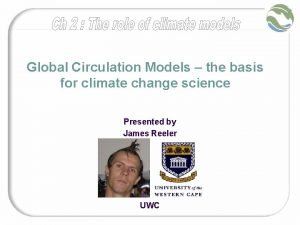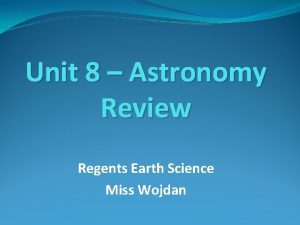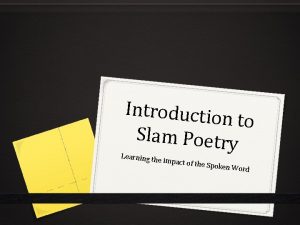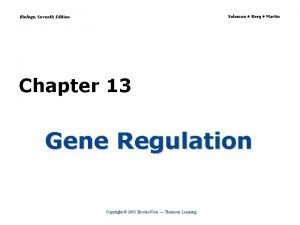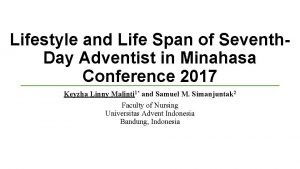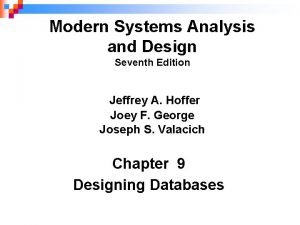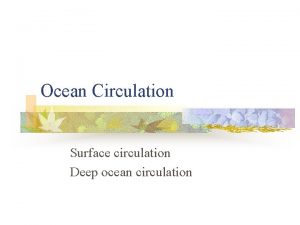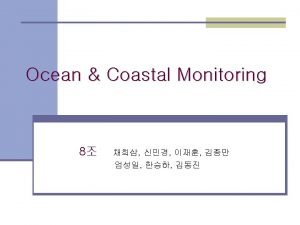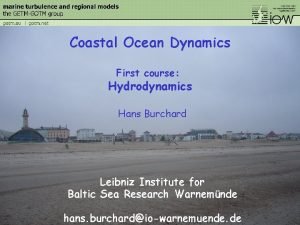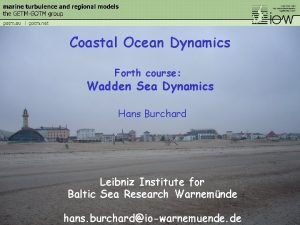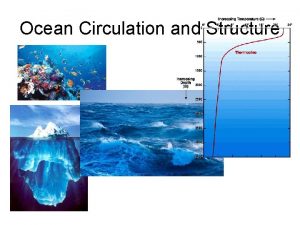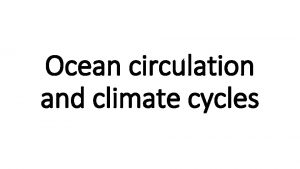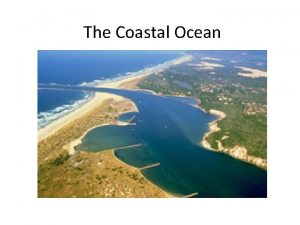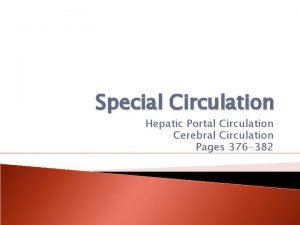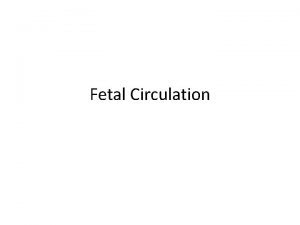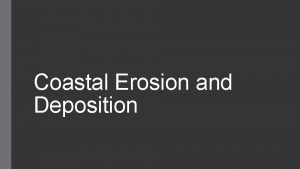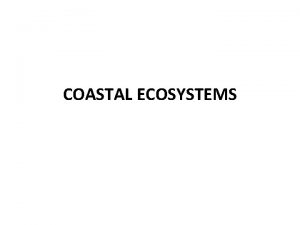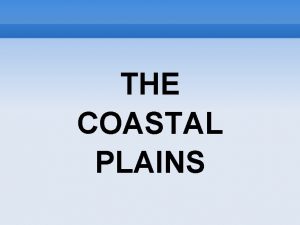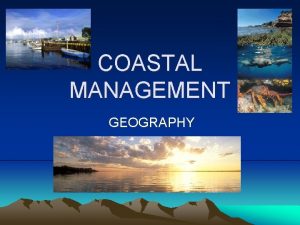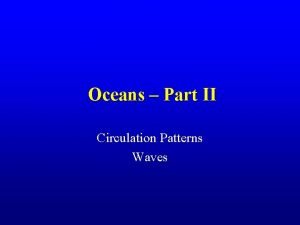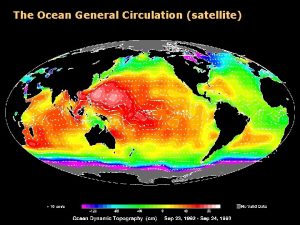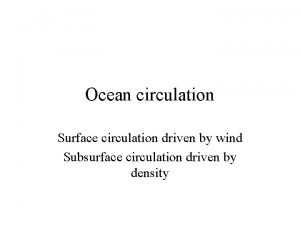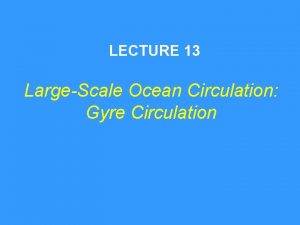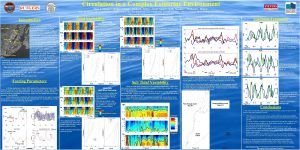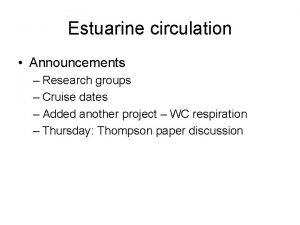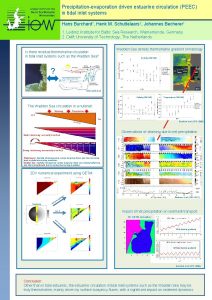Coastal Ocean Dynamics Seventh course Estuarine Circulation Hans



























- Slides: 27

Coastal Ocean Dynamics Seventh course: Estuarine Circulation Hans Burchard Leibniz Institute for Baltic Sea Research Warnemünde hans. burchard@io-warnemuende. de

The principle of estuarine circulation Mac. Cready and Geyer (2010)

Knudsen formula of 1900 s=0 Volume conservation: Salt conservation: 0

Analytical solution for estuarine circulation Balance between pressure gradient and friction: . With we obtain the analytical solution: .

Example solution

Tidal straining after flood after ebb Mac. Cready and Geyer (2010) after Simpson et al. (1990)

Estuarine circulation due to tidal straining 75% level Mac. Cready & Geyer (2010) after Jay & Musiak (1994)

Simple model simulations of estuarine circulation under tidally energetic conditions With full-scale 1 D model (GOTM, www. gotm. net): Gravitational circulation and tidal straining profiles can be decomposed. Result: Tidal straining makes about 2/3 of estuarine circulation. Burchard and Hetland (JPO 2010) Estuarine circ. Straining Gravitational

Lateral circulation in tidal estuaries Flood currents are faster in the deep channel such that salinity becomes higher in the channel centre than at the sides. This lateral density gradient then causes lateral circulation. Ebb is vice versa. Mac. Cready & Geyer (2010)

Floating material collected at tidal front during flood (Conwy River, Wales, UK) Nunes & Simpson (1985)

Estuarine circulation due to lateral circulation During flood high (positive) surface momentum is vertically transported to the near bed region. During ebb, relatively high (negative, but less negative than in channel centre) is transported from the sides to the central nearbed region. This both supports estuarine circulation. Mac. Cready & Geyer (2010)

Enhancement of estuarine circulation in channelised tidal flow ww w. ge tm . eu (2 D slice modelling with GETM) Burchard et al. (JPO 2011

Circulation in transverse estuary

Transverse structure of estuarine circulation Tidal straining circulation Advective circulation Gravitational circulation Barotropic circulation Burchard et al. (JPO 2011)

Consequences of estuarine circulation on sediment transport ETM = estuarine turbidity maximum Jay and Musiak (1994)

The lower Elbe River

Observations of ETM in lower Elbe River Run-off Neu-Darchau = 707 m 3/s Salinity (g/kg) Courtesy Jens Kappenberg

The Wadden Sea http: //en. wikipedia. org/wiki/Wadden_Sea

Sediment transport in the Wadden Sea Suspended matter concentrations are substantially increased in the Wadden Sea of the German Bight, without having significant sources at the coast. Why ? Total suspended matter from MERIS/ENVISAT on August, 12, 2003.

Model approach: 1. Simulating a closed Wadden Sea basin (Sylt-Rømø bight) with small freshwater-runoff and net precipitation. 2. Spin up model with variable and with constant density until periodic steady state. 3. Then initialise both scenarios with const. SPM concentration. 4. Quantify SPM content for control volume. Burchard et al. (JPO 2008)

Surface salinity at high and low water Burchard et al. (JPO 2008)

Total water and SPM volume V / km 3 With density differences Burchard et al. (JPO 2008)

Total water and SPM volume V / km 3 Without density differences Burchard et al. (JPO 2008)

Sea level rise & tidal flat growth (Danish Wadden Sea) Data and graphics from Morten Pejrup, Copenhagen Universit

Does this all happen in nature? Ok, let’s go out to the Wadden Sea and measure:

Campaign in Lister Deep (April 2008) shoals Becherer et al. (GRL 2011)

Data at S 1 Becherer et al. (GRL 2011)
 Single circulation and double circulation
Single circulation and double circulation Single circulation and double circulation
Single circulation and double circulation Bronchi diagram
Bronchi diagram Slowing atlantic ocean circulation
Slowing atlantic ocean circulation Ocean tides observed at coastal locations
Ocean tides observed at coastal locations Scrat s continental crack up
Scrat s continental crack up Convergent boundary
Convergent boundary Convergent oceanic oceanic plate boundary
Convergent oceanic oceanic plate boundary Ocean ocean convergent boundary
Ocean ocean convergent boundary Red ocean blue ocean strategi
Red ocean blue ocean strategi Convergent boundary feature
Convergent boundary feature Nekton include all animals that
Nekton include all animals that Ocean ocean convergent boundary
Ocean ocean convergent boundary Chaine parallèle muscle
Chaine parallèle muscle Course title and course number
Course title and course number One and half brick wall
One and half brick wall Principles of information systems
Principles of information systems Database system concepts seventh edition
Database system concepts seventh edition Brave seventh grade viking warrior
Brave seventh grade viking warrior Biology seventh edition
Biology seventh edition “mother and daughter” by gary soto
“mother and daughter” by gary soto Dante's hell levels
Dante's hell levels Pleomorphic adenoma
Pleomorphic adenoma Seventh day adventist church
Seventh day adventist church Human anatomy and physiology seventh edition marieb
Human anatomy and physiology seventh edition marieb The devil from seventh grade 1960
The devil from seventh grade 1960 At the seventh sprint review the stakeholders
At the seventh sprint review the stakeholders Seventh normal form
Seventh normal form



